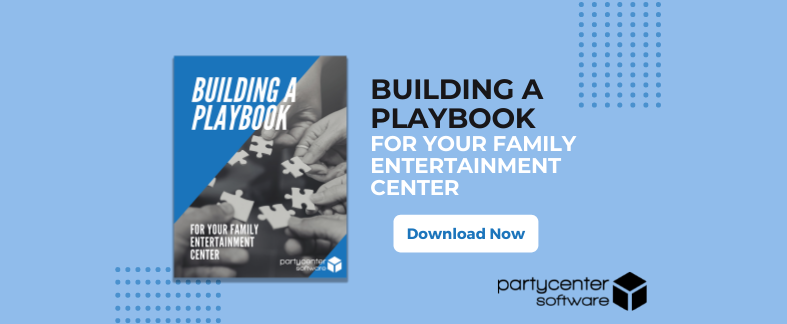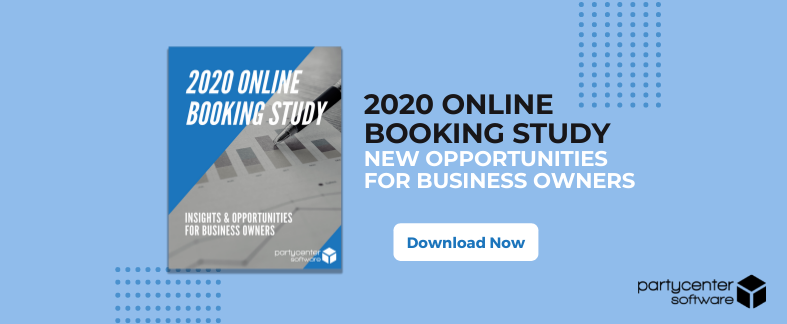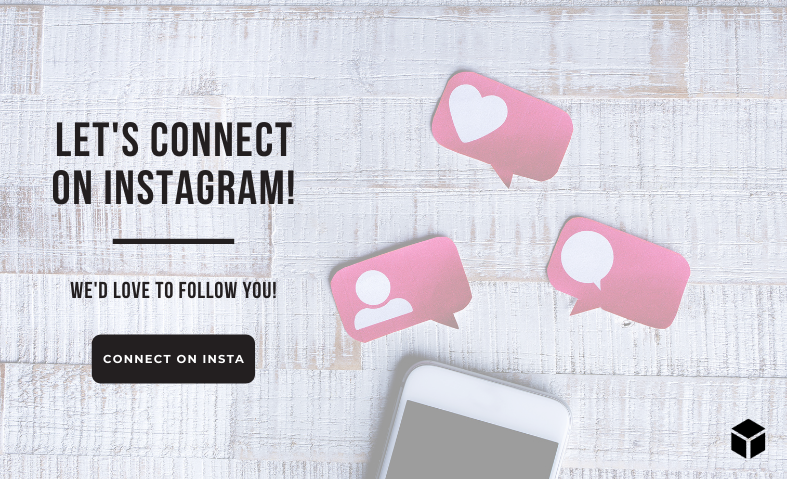Wondering where to focus your marketing energy? Well, it all depends on your customer’s journey to your FEC.
If customer journey mapping sounds complicated, don’t worry—we’re going to break it down in this article!
And once you get into the habit of customer mapping, you’ll discover just how helpful it can be. A good customer journey map will give you insights into how your guests discover you and what keeps them returning to your facility. It will also expose pitfalls in your marketing strategy. We like to call this: areas of opportunity!
So, are you ready to create new opportunities for your business? Let’s dive in.
What is a Customer’s Journey?
A customer’s journey is the steps, or stages, that a customer goes through to achieve their desired outcome.
Let’s route a customer journey together using the example of booking a birthday party.
Our example in this journey is Christina, a 34-year-old working mom with a 10-year-old daughter, Taylor, and 5-year-old son, Brayden.
Christina and her husband recently decided to sell their home and move a little closer to work and to her parents.
Once they finally get settled, Christina is living in an ordinary (and super busy) world when one day, she looks at the calendar and sees that her son’s birthday is just three weeks away. She realizes it’s time to get to planning and sets off to find the right place to host a party.
But because she isn’t familiar with the new town, there’s resistance in her mind when she thinks about all the time and effort needed to throw a great birthday party for him.
So, naturally, Christina grabs her laptop. She heads to Google search and starts typing:
- “birthday party venues near me”
- “kids birthday party Atlanta”
- “fun place for family party in Atlanta”
Christina comes up with a few options.
She then decides to jump on social media to start vetting some of the locations.
She joins a few Facebook groups for local moms in Atlanta and runs the facility names through the group’s search filter. Boom! She has a hit on the first location. It looks like other moms have talked about birthday parties at the local family entertainment center searched and the comments seem positive. One mom said the place is fun, but she felt it was understaffed and disorganized.
Christina pauses for a moment, but after clicking back to the businesses website and looking at the beautiful website pictures, she decides to call.
This is where Christina hits a wall. Apparently, the person responsible for the party rooms isn’t on shift and won’t be back for 2 days. “Next!” she says out loud as she clicks back to the Facebook mom group.
Time is ticking, so Christina decides to create a new post in the group. She lists the venues she’s considering for a party and asks if anyone has had any experiences. Boom! The responses start flooding in. Five different people post raving reviews about one of the locations, so Christina clicks back over to their website.
Low and behold, Christina can check availability, book a time, and pay a deposit within minutes on this venue’s website! What a wonderful thing! Christina books the day and time she wants and is so excited that she ends up selecting quite a few add-ons during the check-out process too.
Best yet, her son and his classmates have the time of their lives. “This was the best birthday party ever!” Brayden says.
After the fun, Christina goes back to regular life, but as a more seasoned and experienced birthday party planner. She now knows what to avoid and what to look for when it comes time to planning Taylor’s birthday party that’s now right around the corner!
With this story, you can identify the steps a busy mom goes through in her process of getting the job done. By doing so, we start thinking less like a business owner and more like your customers.
NEW RESOURCE
Effectively marketing your FEC or event venue doesn't have to feel like rocket science.
In this eBook, you'll discover:
- How to build a better website that'll grow your business.
- How to create digital content that'll attract your target customers.
- How to motivate customer engagement through experiential marketing.
- How to track marketing data for growth.
If you'd like to learn more, click on the image below to download a copy of this complimentary guide!

How to Create a Customer Journey Map
With the example above, let’s assume that our goal of creating a customer journey map is to increase the number of parties booked each month. From the standpoint of the customer, their goal is to find and book a venue to accommodate a group of 5-year-olds in the most efficient way possible. You want to help them get the job done better than anyone else in your market.
Step 1: Identify Touch Points
The first step is to identify every communication touchpoint that your customers experience when interacting with your business to book a party. These would include search terms (SEO), social media posts, paid ads, website, phone calls, and emails that occur during the awareness, consideration, purchase, and post-purchase stages.
For each touch-point, put yourself in the shoes of your customers and describe what they hear, see, think, and feel.
The quickest and easiest way to do this is by becoming a mystery shopper for your own business by walking through each step in the process of booking a party at your facility.
A better way to do it is to ask a mom (or a few!) to walk through the steps of booking a party so that you gain more profound insights than doing it yourself. You might even consider providing an incentive (like a complimentary bagel breakfast) in exchange for their insights. Better yet, toss the invitation to your bagel breakfast in that local Facebook mom group (along with a discount for their kids to play)!
Step 2: Determine Success and Opportunities
The next step is to look at each touch point to determine where you’re succeeding, and where you can improve.
A good place to start is anywhere reviews of your business exist. You’ll want to check Yelp, Google, Facebook, and anywhere else customers have reviewed your business. What have people said about your facility or the process of booking a party with you?
You’ll also want to consider each touchpoint area:
- Search terms (SEO) – are you ranking organically for any search terms?
- Social media – are you engaging with guests via social? Are you posting frequently? How about the quality of your posts? Have you set up the “Book Now” button on Facebook to link directly to your online party booking page?
- Paid ads – are you seeing a return on your investment?
- Website – are you able to navigate through your website seamlessly? Are your images compelling? Is it easy for guests to book parties and events? Are guests able to pay for a deposit and sign a waiver online before heading to your facility?
- Phone calls – is your staff trained on how to properly handle calls about birthday parties and events? Are they friendly and helpful on the phone?
- Emails – are you collecting emails through forms on your website, like an email subscription? Do you have email workflows set up to nurture guests?
Step 3: Pivot & Improve
Now that you’ve mapped out your customer journey, the final step is to make improvements to each touchpoint.
For the awareness stage, blogging can be an effective way to provide helpful information about ideas for birthday parties. This will help you rank organically for SEO, especially if you use local keyword search terms.
When your ideal customers are in the consideration stage, you can make it easier for them to make a decision by listing your pricing and party packages on its own web page. Don’t forget to include some great photos that will make guests want to book immediately!
Speaking of booking immediately, to drive the purchase stage forward, don’t forget that “Book Now” button linking to your online party booking page.
Make it easy for customers to flow through your journey and put down that online party deposit.
The more comfortable you can make it for your customers to get the job done, the higher the likelihood is that they would book with you vs. the five other options they have to spend their hard-earned money.
Lastly, remember to make the post-purchase stage so great that they can't wait to come back!

Time to Chart Your Map!
Let’s face it. We’re all competing for the customer experience these days. The more you empathize with your customers, the more likely it is that you'll deliver a better experience than your competitors. Your ability to map the customer journey and take action will set you apart from the other guys.
Now, it’s time to chart your map! If you’re looking for more ideas on customer behavior, grab a copy of our 2020 Online Booking Study. In it you’ll find out who is booking parties, what device they’re booking them on, what day of the week is most popular for booking parties, and more. Click here or on the image below to check out these awesome insights!

Leave a Comment, We'd Love to Hear Your Thoughts!
What did you think about this post? Let us know in the comments below!
Let's Connect!
We want to connect with you on social media so we can serve you best. Follow us on Facebook, Instagram, Twitter, and LinkedIn, and we'll follow you back!
